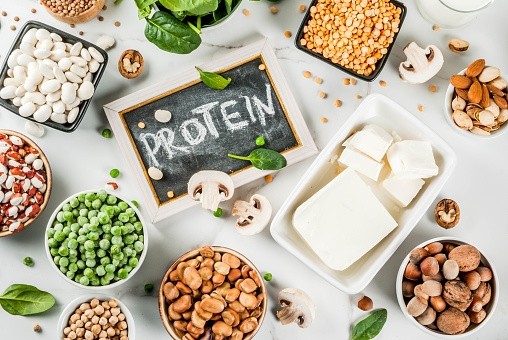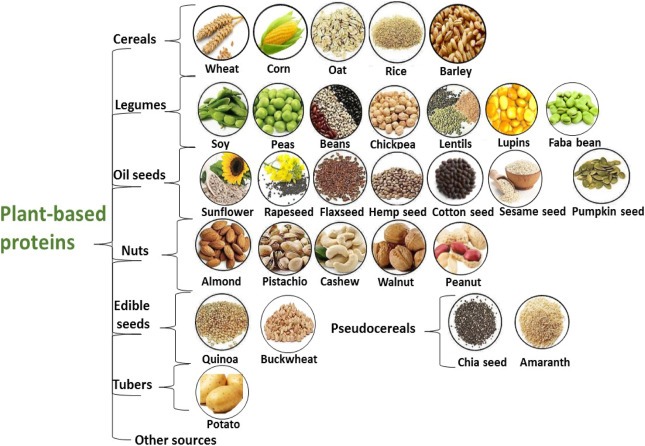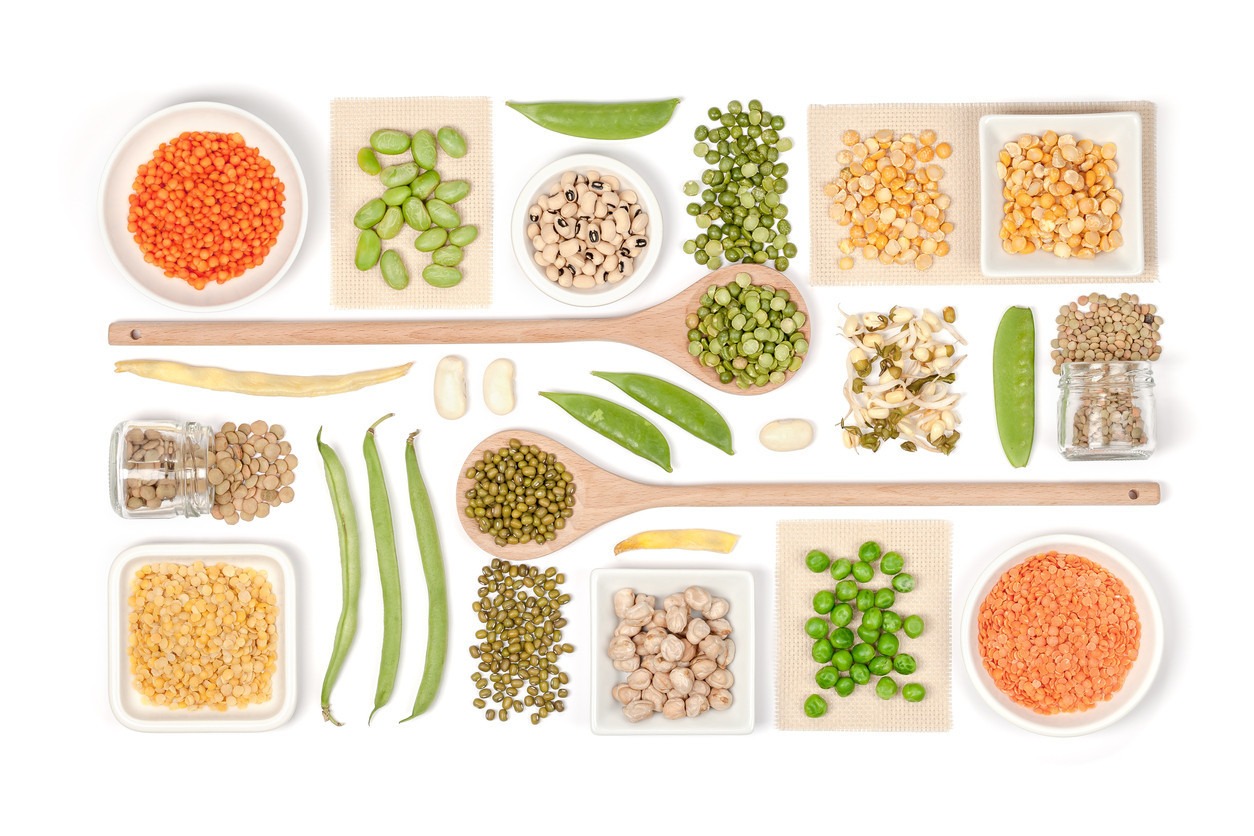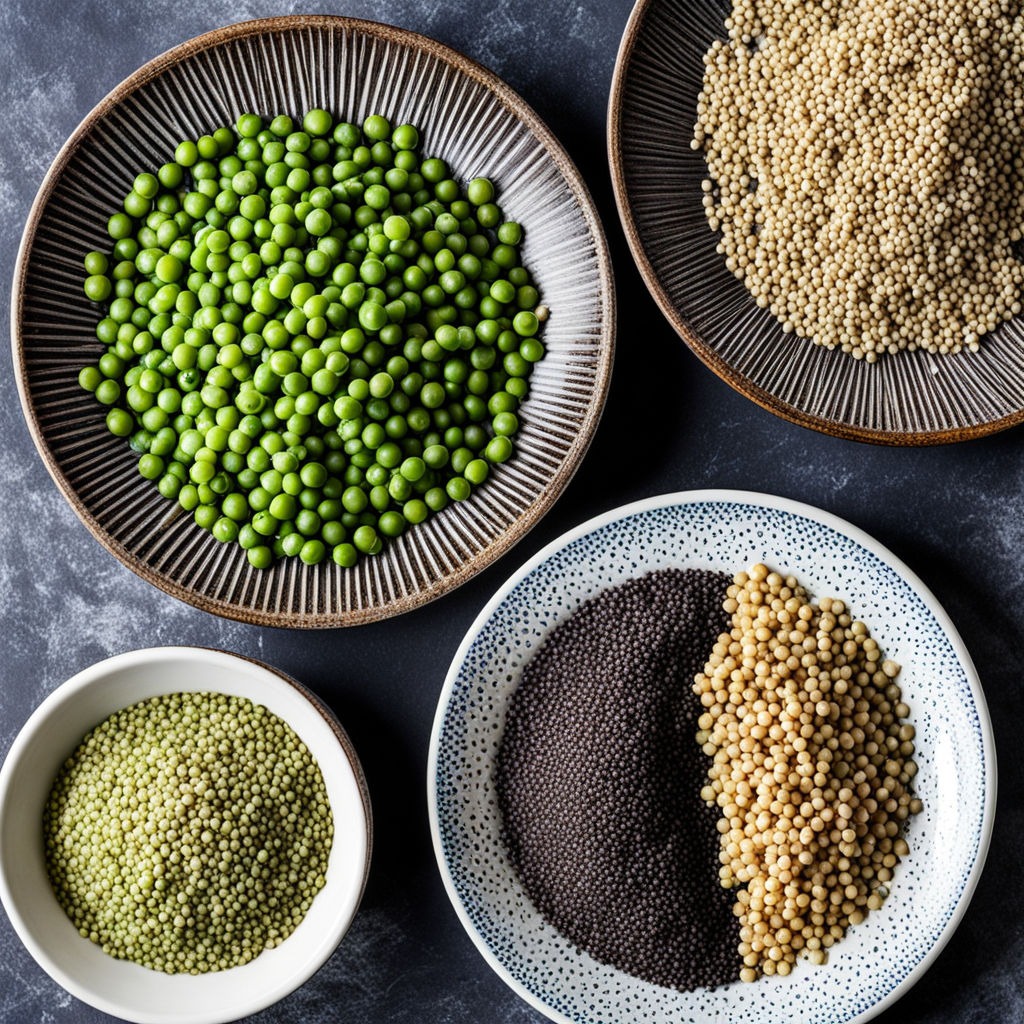Introduction

Overview of Plant-Based Protein Trend: In recent years, the popularity of plant-based protein has surged, driven by growing awareness of health, environmental, and ethical issues associated with traditional animal-based protein sources. This trend is reflected in the increasing availability and variety of plant-based protein products in supermarkets and restaurants worldwide. According to a report by Grand View Research, the global plant-based protein market size was valued at USD 10.3 billion in 2020 and is expected to expand at a compound annual growth rate (CAGR) of 9.7% from 2021 to 2028.
Importance of Protein in the Diet: Protein is an essential macronutrient that plays a crucial role in the growth, repair, and maintenance of body tissues. It is made up of amino acids, which are the building blocks necessary for muscle development, immune function, and overall health. Adequate protein intake is vital for people of all ages, supporting everything from childhood growth to the maintenance of muscle mass in older adults. The National Institutes of Health recommends that adult women consume about 46 grams of protein per day, while adult men should aim for 56 grams..
Purpose of the Article: This article aims to provide a comprehensive guide to plant-based protein, exploring its benefits, sources, and practical ways to incorporate it into your diet. By understanding the nutritional value, environmental impact, and ethical considerations of plant-based protein, readers can make informed decisions about their dietary choices. Whether you are a committed vegan, considering a transition to a plant-based diet, or simply looking to diversify your protein sources, this guide will offer valuable insights and actionable tips.
What is Plant-Based Protein?

Definition and Sources: Plant-based protein refers to protein derived from plant sources, which includes a wide variety of foods such as legumes, nuts, seeds, grains, and vegetables. These sources are rich in essential nutrients and provide a diverse array of amino acids necessary for the body’s functions.
- Legumes: This category includes beans (black beans, kidney beans), lentils, chickpeas, and peas. Legumes are known for their high protein content and are also rich in fiber, iron, and potassium.
- Nuts and Seeds: Almonds, walnuts, chia seeds, flaxseeds, and hemp seeds are excellent sources of protein, healthy fats, and essential minerals. These foods are often used in snacks and as additions to various dishes to boost protein content.
- Grains: Quinoa, farro, bulgur, and oats are examples of grains that provide substantial amounts of protein. Quinoa, in particular, is considered a complete protein, containing all nine essential amino acids.
- Vegetables: While generally lower in protein compared to legumes, nuts, and seeds, certain vegetables like spinach, kale, broccoli, and Brussels sprouts contribute to overall protein intake and provide a wealth of vitamins and minerals.
Comparison to Animal-Based Protein: Animal-based proteins, found in meat, dairy, and eggs, are often considered complete proteins, meaning they contain all nine essential amino acids in the necessary proportions for human health. This has traditionally made them a popular choice for meeting protein needs.
However, plant-based proteins can also provide complete protein profiles when consumed in a varied and balanced diet. For example, combining different plant foods, such as rice and beans or hummus and whole wheat pita, can ensure all essential amino acids are obtained. Additionally, plant-based proteins come with several benefits:
- Lower in Saturated Fat: Plant-based proteins generally have lower levels of saturated fat compared to animal proteins, which can contribute to better heart health.
- Rich in Fiber: Many plant-based protein sources are also high in dietary fiber, which aids digestion and helps maintain a healthy weight.
- Environmental Impact: Producing plant-based proteins typically requires fewer resources, such as water and land, and generates less greenhouse gas emissions compared to animal farming. This makes plant-based diets a more sustainable choice for the planet.
Health Benefits of Plant-Based Protein

Nutritional Value: Plant-based proteins are not only rich in protein but also come packed with essential nutrients such as vitamins, minerals, fiber, and antioxidants. These nutrients play a crucial role in overall health and can help prevent various chronic diseases. For instance, legumes like lentils and chickpeas are excellent sources of iron, magnesium, and potassium, while nuts and seeds provide healthy fats and vitamin E. Types of protein at Firelands Health.
Benefits for Heart Health: Consuming plant-based proteins has been linked to improved heart health. Unlike animal proteins, plant-based proteins are typically lower in saturated fats and cholesterol, which are associated with heart disease. Studies have shown that diets rich in plant-based foods can reduce the risk of cardiovascular disease by lowering blood pressure, improving cholesterol levels, and reducing inflammation.
Impact on Weight Management: Incorporating plant-based proteins into your diet can also aid in weight management. Foods high in plant-based proteins, such as beans, legumes, and whole grains, are often lower in calories and higher in fiber compared to animal proteins. This combination can help you feel fuller for longer, reducing overall calorie intake and assisting with weight loss.
Digestive Health Advantages: Plant-based proteins are excellent for digestive health due to their high fiber content. Fiber helps regulate bowel movements, prevent constipation, and support a healthy gut microbiome. A diverse and balanced gut microbiome is essential for optimal digestion, immune function, and overall health.
Environmental and Ethical Considerations
Lower Carbon Footprint Compared to Animal Protein: One of the most significant environmental benefits of plant-based proteins is their lower carbon footprint compared to animal-based proteins. The production of plant-based foods generally requires fewer resources such as water and land, and generates significantly lower greenhouse gas emissions.
Animal Welfare Concerns: Ethical considerations play a significant role in the shift towards plant-based proteins. The conditions in which many animals are raised for food can involve confinement, overcrowding, and lack of access to natural behaviors, leading to significant animal welfare concerns. By choosing plant-based proteins, consumers can help reduce the demand for factory-farmed animal products, thereby promoting more humane treatment of animals.
Sustainable Farming Practices: Plant-based agriculture can also promote more sustainable farming practices. Crop rotation, polyculture, and organic farming methods help maintain soil health, reduce the need for chemical fertilizers and pesticides, and increase biodiversity. Sustainable farming practices not only preserve the environment but also support the livelihoods of farmers by improving soil fertility and crop yields over time.
Popular Plant-Based Protein Sources

Soy: Soy is one of the most well-known plant protein sources, commonly found in products such as tofu, tempeh, edamame, and soy milk. Soy is a complete protein, meaning it contains all nine essential amino acids that the body cannot produce on its own. This makes it an excellent substitute for red meat. Soy is also rich in vitamins and minerals, including iron, calcium, and vitamin B12.
Quinoa: Quinoa is a highly nutritious grain that is also a complete protein. It includes all the essential amino acids, making it an excellent plant protein source. Quinoa is rich in fiber, magnesium, phosphorus, and manganese. It is also gluten-free, making it a suitable option for those with gluten intolerance.
Lentils: Lentils are a versatile and nutrient-dense source of plant protein. They include a significant amount of fiber, iron, and folate, which are essential for maintaining good health. Lentils are not a complete protein on their own but can be combined with grains like rice to provide all essential amino acids. They are also beneficial in managing blood sugar levels, making them a good choice for individuals with or at risk of type 2 diabetes.
Chickpeas: Chickpeas, also known as garbanzo beans, are another excellent source of plant protein. They are rich in fiber, iron, phosphorus, and folate. Chickpeas include about 15 grams of protein per cooked cup and are versatile enough to be used in a variety of dishes, from salads to hummus.
Nuts and Seeds: Nuts and seeds are compact sources of plant proteins and healthy fats. Almonds, walnuts, chia seeds, flaxseeds, and hemp seeds are particularly notable for their protein content. They include various essential nutrients, including vitamin E, magnesium, and omega-3 fatty acids. Nuts and seeds can be easily added to meals and snacks to boost protein intake and provide a range of health benefits, including improved heart health and reduced inflammation.
Incorporating Plant-Based Protein into Your Diet

Tips for Transitioning to Plant-Based Protein:
- Start Gradually: If you’re used to consuming red meat regularly, start by replacing one or two meals a week with plant protein sources. This can help you adjust your palate and discover new favorite foods without feeling overwhelmed.
- Experiment with Different Plant Proteins: Include a variety of plant proteins like lentils, chickpeas, tofu, quinoa, and nuts in your diet. This diversity ensures you get a range of essential nutrients and helps keep meals interesting.
- Learn New Recipes: Explore recipes that feature plant proteins as the main ingredient. There are countless resources online and in cookbooks that offer delicious and easy-to-make plant-based dishes.
- Plan Your Meals: Planning meals ahead can make the transition smoother. Prepare meals that are both satisfying and nutritionally balanced to avoid relying on convenience foods that might lack essential nutrients.
- Incorporate Plant Proteins into Favorite Dishes: Modify your favorite recipes to include plant proteins. For example, use lentils in place of ground beef in spaghetti sauce, or add chickpeas to your salads and stews.
Sample Meal Plans and Recipes:
Breakfast:
- Smoothie Bowl: Blend spinach, banana, and almond milk, and top with chia seeds, sliced almonds, and fresh berries for a protein-packed start to your day.
- Tofu Scramble: Crumble tofu and sauté with vegetables like bell peppers, onions, and spinach. Season with turmeric, cumin, and nutritional yeast for a savory breakfast option.
Lunch:
- Quinoa Salad: Mix cooked quinoa with black beans, corn, cherry tomatoes, avocado, and a lime vinaigrette. This salad includes plant proteins and provides a complete amino acid profile.
- Chickpea Wraps: Mash chickpeas with lemon juice, tahini, and spices. Spread on a whole wheat tortilla and add lettuce, cucumber, and shredded carrots.
Dinner:
- Lentil Bolognese: Use lentils instead of ground beef in your favorite bolognese sauce recipe. Serve over whole wheat pasta for a satisfying and nutritious meal.
- Stuffed Bell Peppers: Fill bell peppers with a mixture of brown rice, black beans, corn, and diced tomatoes. Bake until peppers are tender and top with a sprinkle of nutritional yeast.
Snacks:
- Nut and Seed Mix: Combine almonds, walnuts, sunflower seeds, and pumpkin seeds for a protein-rich snack.
- Edamame: Steam edamame and sprinkle with sea salt for a quick and easy snack that includes a good amount of plant protein.
Balancing Amino Acids and Ensuring Complete Protein Intake: Plant proteins often need to be combined to provide all the essential amino acids the body needs. While some plant proteins like quinoa and soy are complete proteins, others need to be paired with complementary foods to ensure you get a balanced amino acid profile. Here are a few tips:
- Combine Legumes and Grains: Pair foods like beans and rice, or lentils and whole wheat bread. This combination ensures you get all the essential amino acids.
- Include a Variety of Plant Proteins: Eating a diverse range of plant proteins throughout the day helps ensure you meet your amino acid needs. Incorporate legumes, nuts, seeds, and grains in various meals and snacks.
- Pay Attention to Portions: While transitioning, ensure you consume adequate portions of plant proteins to meet your daily protein requirements. Adults should aim for about 46-56 grams of protein per day, depending on their age and sex.
- Supplement When Necessary: If you have specific dietary restrictions or health concerns, consult with a healthcare provider or a dietitian to tailor your diet appropriately and consider supplements if needed.
Plant-Based Protein Products and Market Trends
Overview of Plant-Based Protein Products:
- Tofu: Tofu, also known as bean curd, is made from soybeans and is a staple in many plant-based diets. It has a neutral flavor that easily absorbs the taste of marinades and spices, making it versatile for various dishes such as stir-fries, soups, and salads. Tofu is a complete plant protein, containing all nine essential amino acids.
- Tempeh: Tempeh is another soy-based product, made from fermented soybeans. It has a firmer texture and a nutty flavor compared to tofu. The fermentation process makes tempeh rich in probiotics, which are beneficial for gut health. Tempeh can be used in sandwiches, salads, and as a meat substitute in various recipes.
- Plant-Based Meat Alternatives: Plant-based meat alternatives, such as burgers, sausages, and chicken substitutes, have gained immense popularity. Brands like Beyond Meat and Impossible Foods. have created products that closely mimic the taste and texture of red meat, making it easier for meat-eaters to transition to plant proteins. These products are typically made from a combination of pea protein, soy protein, and other plant ingredients.
Growth of the Plant-Based Protein Market: The plant-based protein market has experienced significant growth in recent years. According to a report by MarketsandMarkets, the global plant-based protein market size is projected to reach USD 15.6 billion by 2026, growing at a compound annual growth rate (CAGR) of 8.1% from 2021 to 2026. This growth is driven by increasing consumer awareness of the health benefits of plant proteins, environmental concerns, and ethical considerations related to animal welfare.
Innovations and Future Trends
New Protein Sources: Innovation in plant-based proteins includes exploring new protein sources such as algae, peas, and fava beans. Algae, for example, is a highly sustainable source of protein that is rich in essential amino acids, vitamins, and minerals. Companies are developing algae-based protein products that can be used in snacks, beverages, and meal replacements.
Enhanced Nutritional Profiles: Manufacturers are working to enhance the nutritional profiles of plant-based protein products by fortifying them with additional vitamins and minerals, such as vitamin B12, iron, and calcium. This makes plant proteins more competitive with animal proteins in terms of nutritional value.
Improved Texture and Flavor: Advancements in food technology are leading to plant-based protein products with improved texture and flavor. Techniques such as extrusion and fermentation are being used to create plant proteins that more closely mimic the sensory attributes of animal-based products, making them more appealing to a broader audience.
Sustainability Focus: Sustainability continues to be a major driver in the plant-based protein market. Companies are not only focusing on reducing the environmental impact of their products but also on sustainable packaging solutions. Innovations such as biodegradable packaging and reduced plastic use are becoming more common in the industry.
Expansion into New Markets: As consumer demand grows, plant-based protein companies are expanding into new markets globally. Regions such as Asia and Latin America are seeing increased interest in plant-based diets, driven by health trends and environmental concerns. This expansion is expected to contribute significantly to the market’s growth in the coming years.
